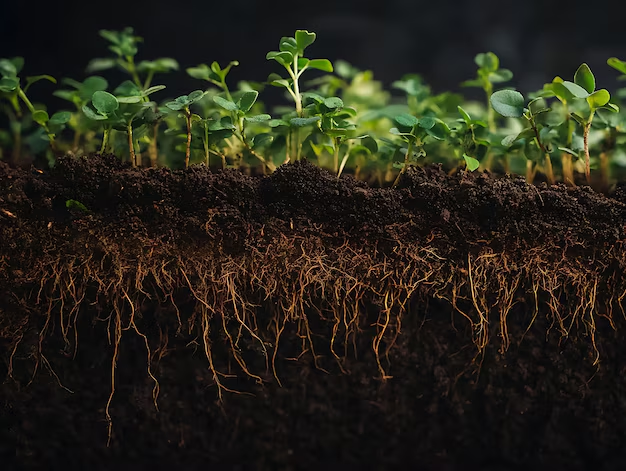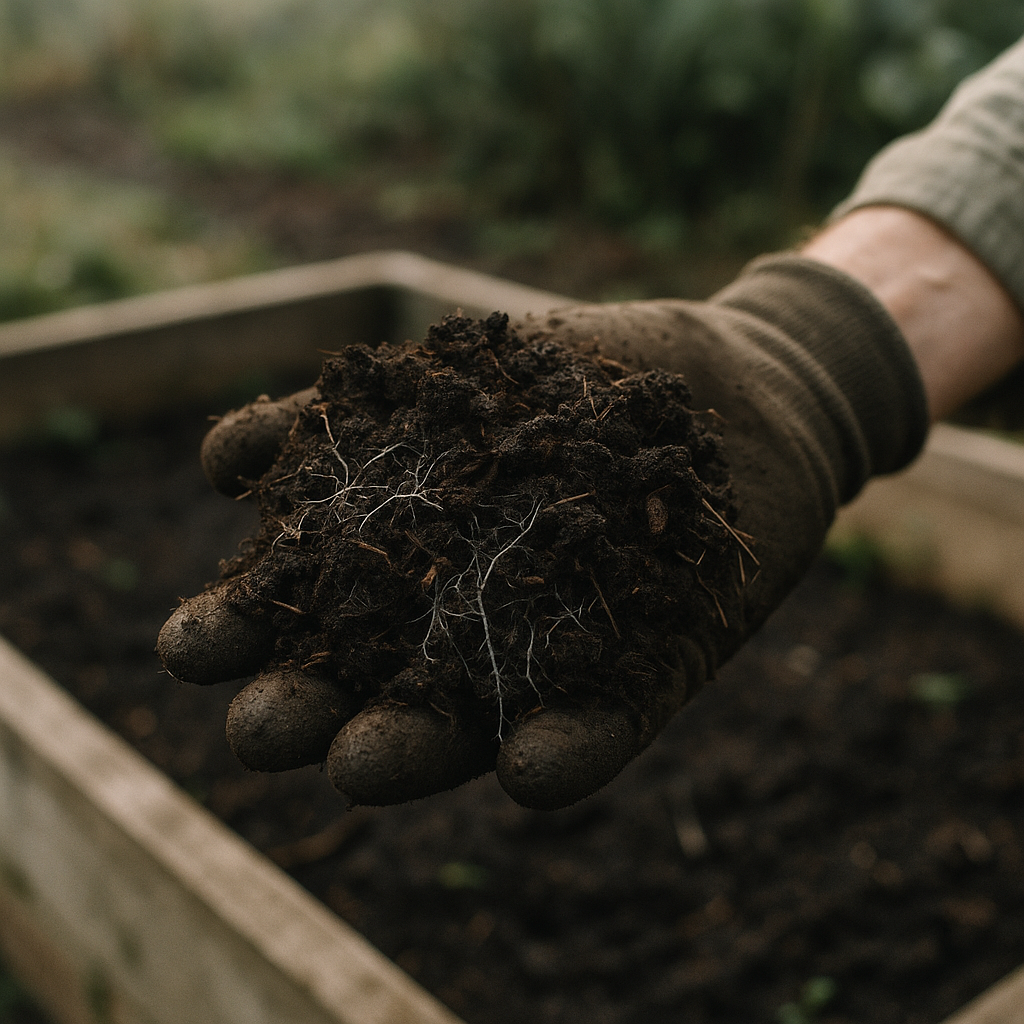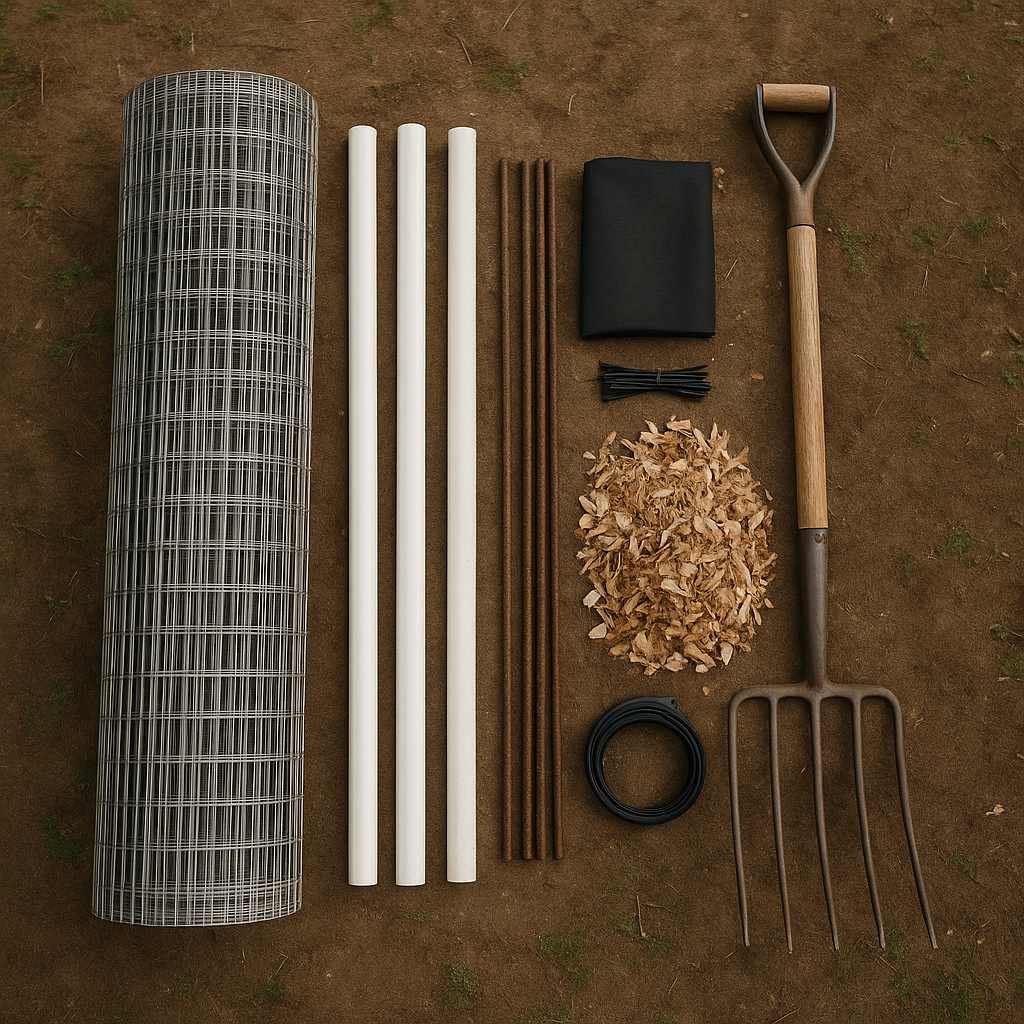Physical Address
304 North Cardinal St.
Dorchester Center, MA 02124
Physical Address
304 North Cardinal St.
Dorchester Center, MA 02124

Have you ever spread compost over your garden beds, only to notice your plants seemed… underwhelmed?

You’re not alone. I remember the first time I built a bioreactor in my backyard. I layered straw, wood chips, and chicken litter, thinking it was just another compost pile. But a year later, when I dug in, it was like unearthing forest soil after a rainstorm – dark, crumbly, and laced with fine white fungal strands. That season, my kale leaves were wider than my forearm, and my tomatoes tasted like they were grown in a secret valley no store has ever seen.
That’s when I realized: compost isn’t about rotting waste. It’s about cultivating life.
✅ Why: Build fungal-dominant, microbially rich compost that regenerates soil health and produces nutrient-dense food.
✅ How: Create a simple cylindrical frame with vertical pipes for airflow, layer organic materials soaked thoroughly, keep moist, and leave undisturbed for up to 12 months.
✅ Result: Soil teeming with beneficial fungi and bacteria that improve plant growth, drought resistance, and food quality.
Bioreactor composting is a no-turn, aerated composting method designed to maximize microbial diversity, especially beneficial fungi, by keeping organic matter moist and oxygenated for up to 12 months to create a powerful soil inoculant.
Imagine building a compost pile that works like a slow-brewing microbial tea – but instead of rotting fast and getting hot, it quietly grows an underground society of life.
That’s bioreactor composting.
At its core, bioreactor composting is a method designed to maximize microbial diversity while minimizing human labor. Unlike traditional compost piles that need turning and constant management, bioreactors are set up once and left alone – no turning, no fuss.
The most well-known design is the Johnson-Su bioreactor, developed by Dr. David Johnson and Hui-Chun Su at New Mexico State University. Their system uses a simple cylindrical mesh frame filled with organic matter and vertical aeration pipes to keep oxygen flowing throughout the pile. It stays moist and undisturbed for a year, allowing a rich fungal-dominant ecosystem to develop.
Why does this matter?
Because while traditional compost focuses on breaking down waste quickly, bioreactor composting focuses on building life. Finished Johnson-Su bioreactor compost has been shown to contain between 400 and 700 species of beneficial microbes, creating a living inoculant that transforms dead dirt into thriving, resilient soil teeming with life.
And here’s the best part: Even though the original design was built for farms with tractors and scaffolding, it can be simplified for your backyard or homestead. In the next sections, you’ll see exactly how to build your own microbial powerhouse – simply, affordably, and effectively.
The Johnson-Su bioreactor is an incredible system – if you’re a farmer with heavy equipment.
Here’s the problem: The original design stands six feet tall and over four feet wide. It was engineered to handle massive amounts of compostable material and to be filled using tractors or scaffolding. The structure uses welded rebar templates to hold aeration pipes straight, requires pre-soaked materials for optimal moisture, drip irrigation systems to keep it alive, and takes up about 2.3 cubic yards (1.76 m³) of space.
If you’re a backyard gardener or homesteader, that’s a big ask. Most of us don’t have scaffolding in the shed or tractors parked next to our raised beds.
But here’s the good news:
The brilliance of the Johnson-Su bioreactor isn’t in its industrial scale. It’s in the biological principles behind it. When you understand why it works – low disturbance, constant aeration, moisture management, fungal food sources, and long maturation time – you realize:
🔑 You don’t need the industrial build. You need the biological function.
By simplifying the design while keeping its core principles intact, you can create the same microbially rich, fungal-dominant compost in your own backyard – without a tractor, scaffolding, or complex irrigation systems.
Turning compost might feel productive, but it rips apart fungal hyphae – the microscopic threads that act like nature’s internet cables, transporting water, nutrients, and information throughout the pile. Leaving compost undisturbed allows these fungal networks to grow strong, just like an old-growth forest floor.
Microbes need oxygen to thrive. Bioreactors use vertical pipes to ensure that no part of the pile is more than a foot from air, preventing the smelly anaerobic rot that happens in oxygen-starved piles.
At around 70% moisture (like a wrung-out sponge), microbes build and multiply. If it’s too dry, they go dormant or die. Too wet, and anaerobic bacteria take over, leading to rot instead of regeneration.
Fungi are the architects of stable soil, and they love carbon-rich materials – straw, wood chips, leaves. While bacteria thrive on nitrogen-heavy materials, fungi flourish in carbon-dominant environments, creating long-lasting soil structure and nutrient retention.
Time is the secret ingredient. At four weeks, a compost pile might contain 320 species of microbes. By 60 weeks, that number can climb to over 450 species. Diversity doesn’t just happen – it unfolds slowly, creating a resilient and balanced microbial community.
These principles align perfectly with permaculture design ethics:
Here is the final continuation of your publishing-ready article, seamlessly formatted:

| Material | Purpose | Estimated Cost (USD) |
|---|---|---|
| Goat fencing / hardware cloth (1×2” openings) | Forms cylindrical frame with airflow | $60 – $80 |
| Weed blocker fabric | Prevents material spill | $9 – $12 |
| Zip ties (heavy-duty) | Secure mesh and pipes | $9 – $10 |
| Rebar stakes (½” x 4 ft) | Hold pipes straight | $36 – $48 total |
| PVC pipes (3” diameter x 10 ft) | Vertical air channels | $90 – $108 total |
| Mechanical timer + sprinkler | Consistent moisture without drip system | $22 – $35 |
| Wood chips | Top capping for moisture retention and fungi | Free – $40/yard |
| 10-tine manure fork | Moves bulk materials efficiently | $35 – $45 |
Optional Enhancers:
Examples: Straw, wood chips, dry leaves, shredded cardboard
Why: Feed fungi, build stable soil structure
Ratio: 2-3 parts carbon : 1 part nitrogen by volume
Examples: Green trimmings, manure, limited food scraps
Why: Fuels bacterial growth to kickstart decomposition
Application: Thin layers (~1 inch / 2.5 cm) between carbon layers
Why: Provides permanent housing for microbes, increases nutrient and water holding
Application: 5-10% by volume, pre-charged with compost tea or manure slurry
Why: Accelerate decomposition and add microbially rich castings
When to add: Only after pile cools below 80°F (27°C)
Examples: Finished compost, forest soil, IMO captures
Why: Seeds your pile with diverse beneficial microbes
Application: Sprinkle 1-2 cups (250-500 ml) every few layers
If you raise poultry, deep litter bedding offers a perfect balanced input:
⚠️ Herbicide Testing Note: Always test straw bedding for persistent herbicides before composting (full bioassay protocol in troubleshooting).
| Ecosystem / Crop | Fungal:Bacterial Ratio | Explanation |
|---|---|---|
| Leafy greens, brassicas | ~0.3 : 1 | Bacteria-dominated soil preferred |
| Row crops (corn, soy) | ~0.5 – 0.8 : 1 | Balanced bacterial leaning |
| Perennial herbs/vegetables | ~1 : 1 | Even balance supports perennial health |
| Berries, orchards | ~2 – 5 : 1 | Fungal dominance supports deep-rooted perennials |
| Deciduous forests | ~10 : 1 | Stable fungal-rich soil |
| Coniferous forests | ~100 : 1 | Highly fungal dominated systems |
Fungal-dominant soils:
Here is the final Part 3 (completion) of your publishing-ready article, continuing seamlessly:
Rate:
| Ingredient | Ratio by Volume | Why It’s Used |
|---|---|---|
| Screened bioreactor compost | 30% | Microbes + nutrients |
| Biochar | 10-20% | Microbial habitat + nutrient retention |
| Peat moss / coir | 30-40% | Moisture retention |
| Perlite / pumice | 20-30% | Drainage + aeration |
Modern agriculture leaves soils degraded and lifeless. Fungal-dominant composting:
Every bioreactor you build is an act of regeneration – for your soil, your food, and your health.
| Problem | Cause | Solution |
|---|---|---|
| Dry pile | Inadequate watering | Rehydrate gradually |
| Anaerobic rot | Dense greens, compaction | Mix in carbon, ensure airflow |
| Herbicide damage | Contaminated straw/manure | Perform bioassay before use |
| Overheating >165°F | Excess nitrogen | Water to cool, avoid turning |
| Blocked pipes | Uncovered or clogged | Cover tops, clear as needed |
✅ Build under 1 cubic yard? Usable but with reduced microbial diversity; ≥1 cubic yard recommended
✅ When is it ready? Usable in 90-120 days, maximum diversity at 12 months
✅ Need worms? Optional, beneficial if added after cooling
✅ Why fungal dominance? Builds soil structure, unlocks minerals, supports plant immunity
✅ Turn pile? Never – preserves fungal networks
✅ Sell compost? Yes – premium product
✅ Extract vs tea? Extract preserves diversity; tea multiplies select microbes
✅ Fresh wood chips okay? Yes, aged preferred for faster decomposition
✅ Moisture test? Squeeze to wrung-out sponge feel
✅ Is biochar essential? No, but greatly enhances compost function
✅ Johnson-Su Bioreactor Resources – Link
✅ Regenerative Soil by Matt Powers – Deep soil biology insights
✅ For the Love of Soil by Nicole Masters – Soil health diagnostics and regenerative solutions
Choose one action today:
At Systems Of Intelligent Life™, we believe that restoring soil is the first step to restoring ourselves – creating stronger food, stronger bodies, and a more resilient future.